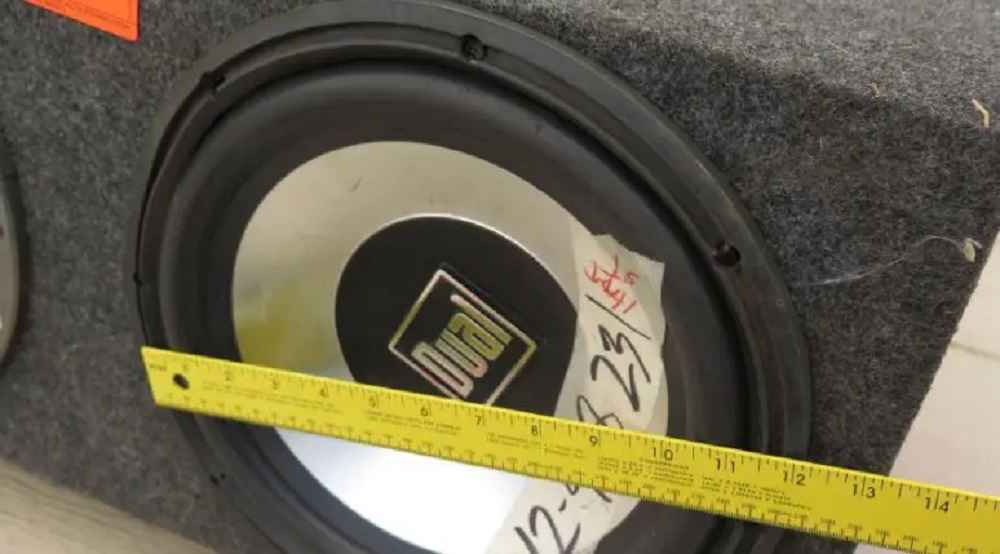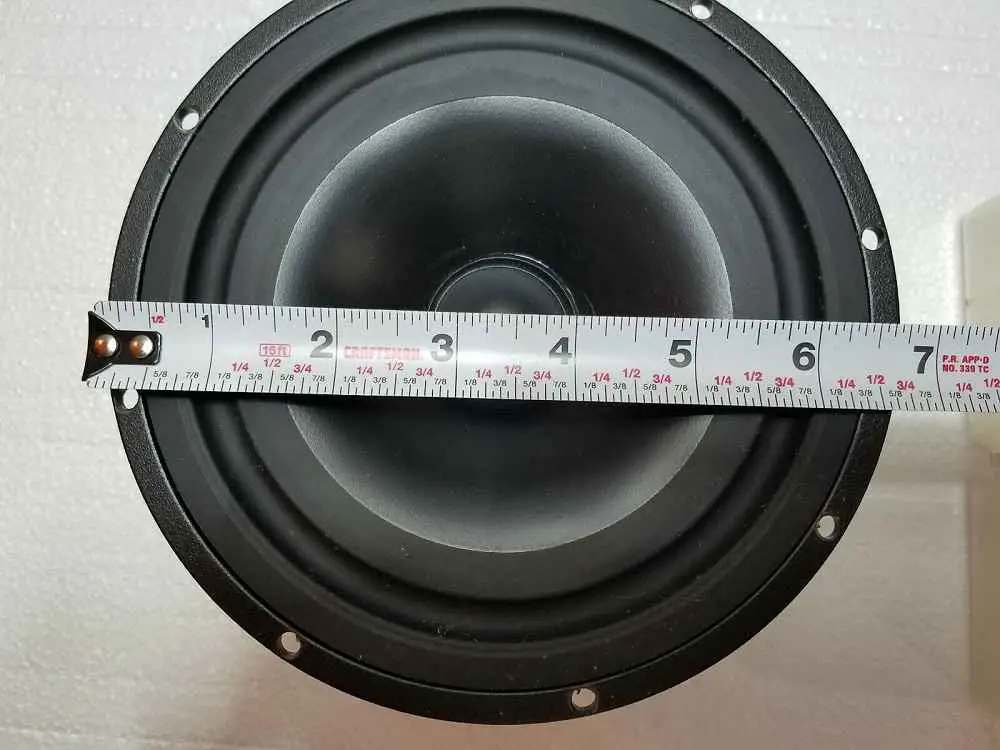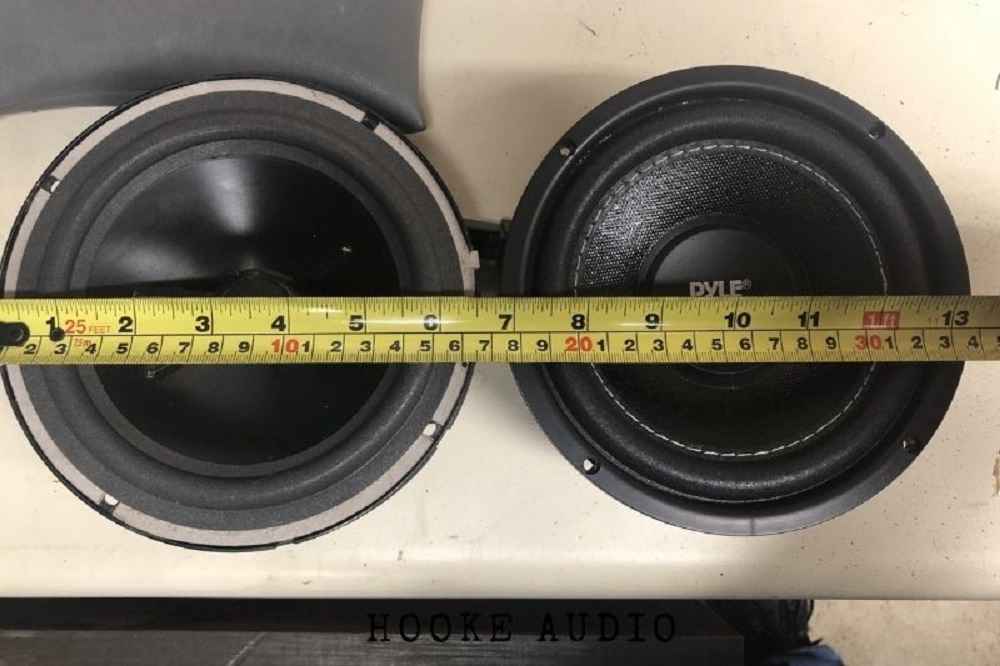Subwoofers are an essential component of a car or home audio system. They add depth and impact to the overall sound experience.
Measuring subwoofers accurately is crucial to achieving optimal performance, as it helps to identify areas for improvement and ensure that the subwoofer is functioning as intended.

In this article, we’ll be walking you through the steps on how to measure your car subwoofer, what equipment you’ll need, and how to adjust the subwoofer settings for optimal performance.
Equipment Needed
Before we dive into the process of measuring your subwoofer, let’s take a look at the equipment you’ll need:
Sound Pressure Level (SPL) Meter:
An SPL meter is a tool used to measure the sound pressure level of an audio source. This device is essential for measuring the subwoofer’s frequency response.
RTA (Real-Time Analyzer):
An RTA is used to measure the distortion in a subwoofer’s output. This tool allows you to see the subwoofer’s output in real-time and identify areas where the sound is being distorted.
Test Tones:
Test tones are audio signals that are used to measure the subwoofer’s frequency response. These signals are usually sine waves at specific frequencies.
Audio Source:
An audio source is required to play the test tones. A laptop or smartphone with audio playback capabilities is sufficient.
Preparation
Before you begin measuring your subwoofer, there are a few steps you need to follow to ensure you get accurate results:
Set Up the Subwoofer:
Make sure the subwoofer is securely mounted and wired correctly. The subwoofer should be in the same position and orientation as it will be in use.
Choose the Right Test Tone:
The test tone you use will depend on the frequency range of your subwoofer. It’s essential to choose a test tone that covers the entire frequency range of the subwoofer to get accurate results.
Setting Up the SPL Meter:
The SPL meter should be placed in the same position as the listener’s ear would be when the subwoofer is in use. Make sure the microphone of the SPL meter is pointing towards the subwoofer.

Measuring Frequency Response
Now that we have the equipment set up, it’s time to measure the subwoofer’s frequency response. The frequency response of a subwoofer refers to how it responds to different frequencies of sound.
Placement of SPL Meter:
The SPL meter should be placed in the same position as the listener’s ear would be when the subwoofer is in use. Make sure the microphone of the SPL meter is pointing towards the subwoofer.
Playing the Test Tone:
Start by playing the test tone at a moderate volume. It’s essential to play the test tone at a consistent volume throughout the measurement process to get accurate results.
Measuring SPL at Different Frequencies:
With the test tone playing, measure the SPL at different frequencies using the SPL meter. Make sure to measure the SPL at the frequencies specified in the test tone.
Plotting the Frequency Response:
Plot the SPL readings on a graph with frequency on the x-axis and SPL on the y-axis. This graph represents the frequency response of the subwoofer.
The goal is to have a flat frequency response, meaning the subwoofer should produce the same SPL at all frequencies.
Measuring Distortion
Distortion in a subwoofer’s output can be caused by several factors, including incorrect wiring, incorrect settings, and even a subwoofer that is damaged or past its prime.
It’s essential to measure the distortion in a subwoofer’s output to ensure that the subwoofer is functioning correctly.
Set Up the RTA:
Connect the RTA to the audio source and subwoofer. Make sure the RTA is set up to measure the subwoofer’s output.
Measure the THD (Total Harmonic Distortion):
THD refers to the amount of harmonic distortion in the subwoofer’s output. Harmonic distortion occurs when the subwoofer produces additional frequencies that are not part of the original audio signal. The goal is to have as low THD as possible.
Measure IMD (Intermodulation Distortion):
IMD refers to the amount of distortion that occurs when two or more audio signals are combined. The goal is to have as low IMD as possible.
Adjusting Subwoofer Settings
Once you have measured the subwoofer’s frequency response and distortion, it’s time to adjust the settings for optimal performance. The following are the most common adjustments you can make:
Adjust the Volume:
The volume of the subwoofer should be set so that it matches the volume of the other speakers in the system. This can be done using the volume control on the amplifier or by adjusting the settings on the audio source.
Adjust the Phase:
The phase of the subwoofer refers to the timing of its output relative to the other speakers in the system. Adjusting the phase can improve the subwoofer’s integration with the other speakers.
Adjusting the Crossover:
The crossover is a filter that separates the audio signals sent to the subwoofer and other speakers. Adjusting the crossover can improve the subwoofer’s performance by only sending it the frequencies it can handle.

Conclusion
Measuring your subwoofer is a crucial step in achieving optimal performance. By following the steps outlined in this article, you can accurately measure the subwoofer’s frequency response, distortion, and adjust the settings for optimal performance.
Whether you’re an audio enthusiast or a professional car audio specialist, this article will provide you with the knowledge you need to measure your subwoofer like a pro.
What is the purpose of measuring the subwoofer?
Measuring the subwoofer is important to ensure that it is performing optimally and producing sound that is accurate and distortion-free.
Measuring the frequency response and distortion of a subwoofer can help identify any problems and make necessary adjustments for optimal performance.
Can I use any SPL meter to measure my subwoofer?
Not all SPL meters are created equal. It’s essential to use a SPL meter that is designed specifically for audio measurements. A quality SPL meter will provide accurate and reliable results.
Can I measure the subwoofer without an RTA?
An RTA is not necessary to measure the subwoofer’s frequency response, but it is recommended for measuring distortion.
An RTA can provide detailed information about the subwoofer’s output, including THD and IMD, which can be useful in identifying and correcting any problems.
What does a flat frequency response mean?
A flat frequency response means that the subwoofer is producing the same SPL (Sound Pressure Level) at all frequencies. The goal is to have a flat frequency response, as this indicates that the subwoofer is producing accurate and balanced sound.
Is it necessary to adjust the phase and crossover settings on my subwoofer?
Yes, adjusting the phase and crossover settings can improve the subwoofer’s performance by optimizing its integration with the other speakers in the audio system.
The phase setting determines the timing of the subwoofer’s output relative to the other speakers, while the crossover separates the audio signals sent to the subwoofer and other speakers.
Both adjustments can have a significant impact on the subwoofer’s performance.
